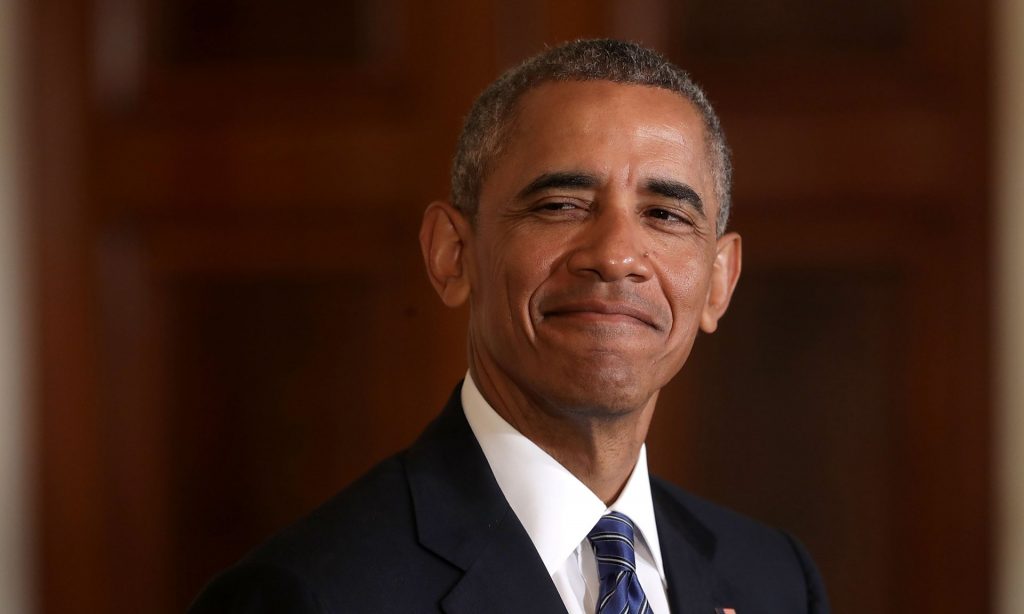The verdict is unanimous: President Barack Obama and every U.S. intelligence service agree that Russian President Vladimir Putin has run a sophisticated intelligence operation designed to disrupt American democracy and elect Donald J. Trump. The lone dissenter? Trump himself.

Obama vows that the United States will respond at a time and in a manner of its choosing. He has, at this writing, one month to strike back. Tick. Tick. Tick.
The White House, the Pentagon, and the Central Intelligence Agency have contingency plans locked away in top-secret compartments. (In theory, locked away from Russia – who knows these days?) They could hit Moscow’s leaders, intelligence services and oligarchs where it hurts. The United States could strike at their computer motherboards or their offshore money. It could place multifaceted malware inside Putin’s espionage networks. It could throw a monkey wrench into his political machine.
If Obama looks back into the annals of the Cold War, he will find a fitting blueprint for the last big intelligence operation of his presidency. It has a perfect code name: Farewell.
By 1975 – the year Putin became a Soviet spy – an espionage unit called Line X was up and running in Moscow. It worked with the KGB’s directorate of science and technology; with the Soviet GRU, devoted to military intelligence; and with the spy services of Eastern Europe. The mission was to steal cutting-edge software and hardware, military and civilian, from the West. The Soviets were 10 years behind the United States in science and technology. They either could catch up or, in time, they could crumble.
In 1981, President Reagan met with President Francois Mitterand of France at an economic summit in Ottawa. They spoke through bilingual intelligence officers. Mitterand, a lifelong socialist, had an invaluable gift for Reagan, an inveterate capitalist, that would serve as a lethal weapon against the Soviets.
The French had an agent inside the KGB, Colonel Vladimir Vetrov, whom they called Farewell. Vetrov had delivered 4,000 documents detailing the work of Line X. They described years of intelligence operations aimed at stealing software for airborne radar systems, designs for war planes and ballistic-missile defenses, computer systems for everything from space shuttles to energy plants – the crown jewels of the American military-industrial complex.
William J. Casey and Vice President George H.W. Bush, respectively, the director and ex-director of the CIA, read the gist of the translated Farewell dossier. They shared it with Richard V. Allen, the national security adviser, who assigned a staff member, Gus Weiss, to help devise a long, slow, subtle and devastating plan of counterattack. Weiss wrote an after-action report for the CIA in 1996. You can read it on the agency’s website.
“It was a brilliant plan,” Allen said 20 years later in an oral history interview. “We started in motion feeding the Soviets bad technology – bad computer technology, bad oil-drilling technology. We fed them a whole lot, let them steal stuff they were happy to get.” FBI agents posed as corrupt military contractors.
They shipped clueless Soviet spies everything they sought and more: computer chips for next-generation weapons, blueprints for chemical plants, state-of-the art turbines. Each had a subtle and fatal defect. This herd of Trojan horses soon started running wild and biting the Russian bear.
And then the United States decided to really let them have it.
The Soviets needed the software for sophisticated computer systems to control pressure gauges and valves vital to an immense natural-gas pipeline under construction from Siberia to Eastern Europe. The CIA and the FBI surreptitiously steered a Soviet Line X officer to a Canadian company that had exactly the software he’d been assigned to steal. Moscow was well pleased. The codes and silicon chips were implanted in the Trans-Siberian pipeline in late 1982. Months passed. Then, slowly, the pressure started building – tick, tick, tick. Out in the frozen tundra, a fireball exploded.
Of course, had the tables been turned, this could have been seen as an act of terror. But no one was killed. In the context of the Cold War, it was fair play. The CIA put the final touches on the Farewell case by sending deputy director John McMahon to Western Europe with his own dossier: the names of 200 Line X officers and foreign agents. He delivered it to the intelligence services of NATO nations.

